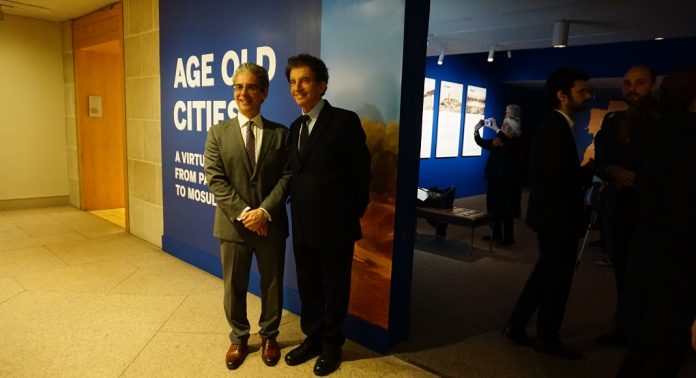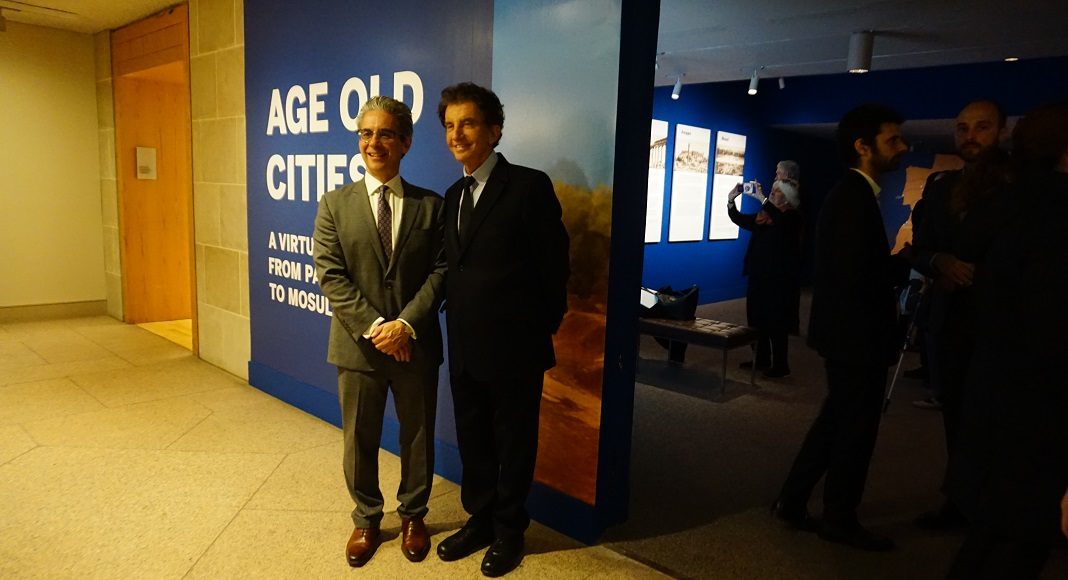
For the first time, an exhibition by the Institute of the Arab World is exhibited in the United States. To mark the occasion, the president of the Arab World Institute traveled to Washington. Thursday January 22, Jack Lang was the guest of the prestigious Smithsonian national museum of Asian Art to inaugurate the exhibition “Millennial Cities. A virtual journey from Palmyra to Mosul ”. Organized and created by the Institute of the Arab World, the exhibition virtually revives several historic sites in Aleppo and Palmyra in Syria, and Mosul in Iraq.
“A sign of confidence from a unique museum”
“It’s a great recognition that the exhibition is in Washington, especially for those who help protect the heritage”, said the former Minister of Culture. Chase F. Robinson, gallery director Arthur M. Sackler, officially opened the opening, recalling: “Syria and Iraq have witnessed wars and massacres. This exhibition brings these historic icons back to life virtually. ”
“The opening of this exhibition is a sign of confidence on the part of a unique museum”added Jack Lang, who insisted on the importance of protecting the legacy of the Arab world, part of whose millennial remains were bombed and destroyed by the Islamic Organization between 2011 and 2017.
A fully virtual exhibit designed by a video game company
Using state-of-the-art technological processes, the exhibition aims to discover the historic sites destroyed by the Islamic Organization. Dressed in 3D glasses and a special helmet, visitors have the impression of walking in the middle of the famous Aleppo souk in full swing. Street sounds, 360-degree view, details of the structures … To succeed, the Institut du monde arabe surrounded itself with the video game company Ubisoft, as well as Iconem and Unesco.
The exhibition gives virtual life to wonders that have disappeared today, such as the Baalshamin temple in Palmyra, the Aleppo souk, the Nabi Yunus tunnels, the Church of Notre-Dame-de-L'Heure, as well as the famous Al-Nouri Great Mosque in Mosul, Iraq. Thanks to the 3D process, visitors can also walk among the ruins or in passages made normally impossible to visit because of the erosion of the sites. “Age Old Cities” It also allows you to get to know the daily life of millions of inhabitants in Syria and Iraq during these six years of war, thanks to short films projected near the virtual reconstructions. A plunge into history that gives hope, since this virtual journey is also a precious help for a possible reconstruction of certain historic sites.
The exhibition “Age Old Cities” is presented at the Smithsonian’s National Museum of Asian Art, at the Freer Gallery of Art between January 25 and October 26, 2020. More information here.



![[Webinaire] Immigrate to the United States in 2021: what is the O visa, and how to get it?](https://californialines.com/wp-content/uploads/2021/01/1611723305_Webinaire-Immigrate-to-the-United-States-in-2021-what-is-218x150.jpg)





